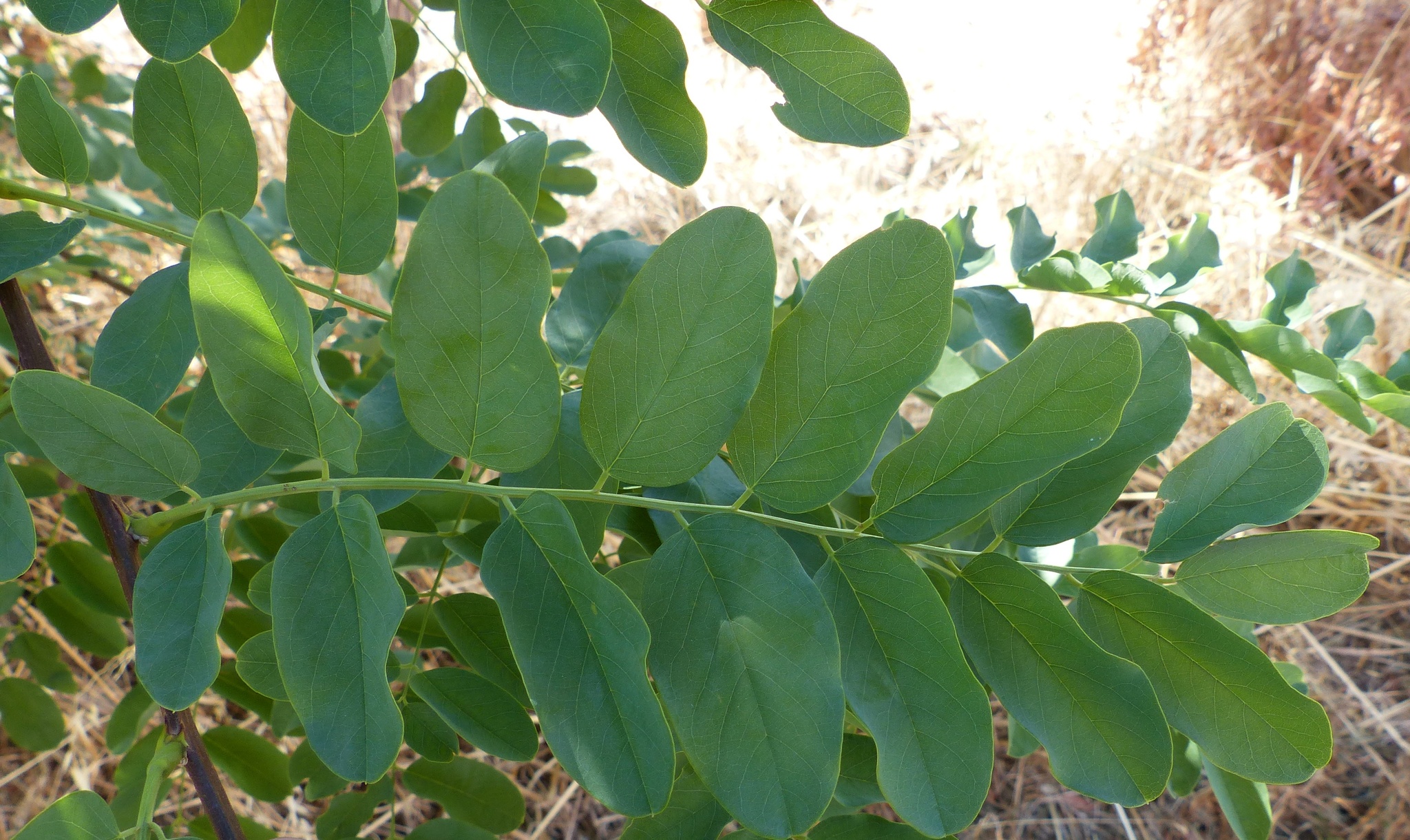
A large, open tree to about 25 m tall with furrowed bark; branches prickly. Leaves odd-pinnate, alternate, 20-30 cm long but often much shorter, the stalk grooved and with a swollen base. Leaflets mostly 9-19, oval or elliptic,mostly 3-5 cm long, closing upwards in poor light; colouring yellow in autumn; stalk about 3 mm long. Flowers downy,10-20 cm long; spring to early summer. Flowers opening at the same time as the leaves, white, with a yellow blotch, fragrant, about 2 cm long. Fruit pod smooth, red-brown, 8-10 cm long, with longer edge ridged; seeds 4-10, black.
Widely grown in the 19th century when it was recommended as a farmyard tree; old trees persist. However, the tree suckers freely when the roots are broken in any way and this species has become naturalised in a few localities in SA, Qld, NSW and Vic. Older trees tend to shed branches.
Several cultivars are top-grafted to form tight, round crowns and all are generally referred to as Mop Top or Mop Head Robinias.
N America.
Sharp spines at the base of the leaves that remain after leaf-fall (except in 'Inermis').
SPECIMENS ACT: Canberra (Commonwealth Park, opposite Time Capsule, largest specimen in Canberra). VIC: Endeavour Hills (Police paddock); Avenel; Stanley. NSW: Berrima (at house next to nsy entrance, c. 160 years old); Wagga Wagga (Collins Park, more than 100 years old).
A 'LACE LADY' Dwarf shrub with zig-zag branches, twisted foliage and miniature spines. Bred by Mr P.J. Cunningham, Auckland, New Zealand, in 1985. PVJ 10(2)55.
Source: (2002). Fabaceae. In: . Horticultural Flora of South-eastern Australia. Volume 3. Flowering plants. Dicotyledons. Part 2. The identification of garden and cultivated plants. University of New South Wales Press.

Robinia pseudoacacia 'Bessoniana'
, Compact Robinia. A fast growing open tree with slender, more or less spineless branches and few flowers. Origin uncertain, possibly Germany or France, c. 1860.
, Golden Robinia. Small tree to no more than 10 m tall. New leaves pure yellow in spring, becoming duller in summer before turning bright bronzeyellow in autumn. Originated from the Frisia Nsy in n Holland. The true 'Frisia' has foliage that remains golden all season while the cultivar 'Aurea' has foliage that is yellow at first, becoming pale green through the season. These two cultivars may have been confused with one another. Specimens act: Canberra (se City Hill car park; London Circuit at Civic Centre).
Robinia pseudoacacia 'Inermis'
, Mop Top Robinia. Like the species but thorns absent or stunted; leaflets slightly larger than the species, cf. 'Umbraculifera'. Possibly originated in France, c. 1800. [var. inermis Willd.]
Robinia pseudoacacia 'Pyramidalis'
A narrow, upright tree. Spines and flowers few. Int. Leroy, Angers, France, pre-1843. ['Fastigiata']
Robinia pseudoacacia 'Rozynskiana'
Open, spreading tree. Leaves long and pendulous. Leaflets narrow and well spaced. Int. Spaeth nurseries in 1903.
Robinia pseudoacacia 'Umbraculifera'
, Mop Head Robinia (Parasol Robinia, Mop Top). A compact, slow growing, round bush usually clipped into lolly-pop like grafted standards several metres tall. Leaves smaller than the species. Flowers rare.Origin uncertain, possibly Austria in 1813, cf. 'Inermis'.
Robinia pseudoacacia 'Unifoliola'
Free-flowering. Leaflets few, 1, 2 or 3, often the enlarged terminal leaflet only. Originated in a French nsy, c. 1855.